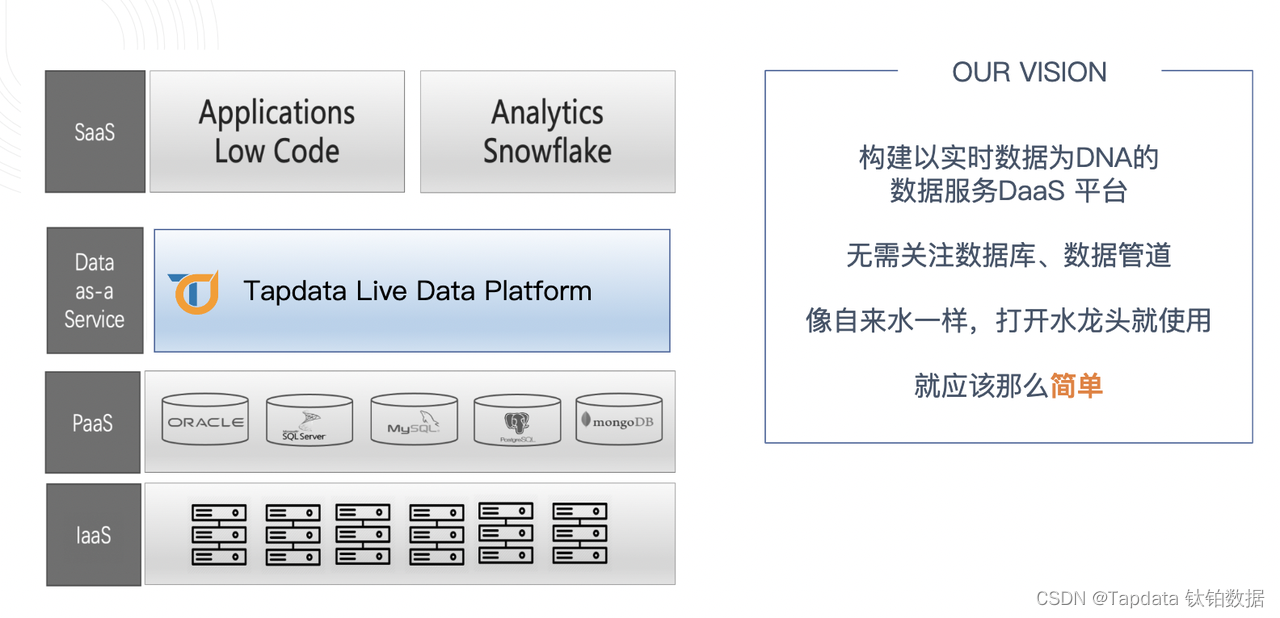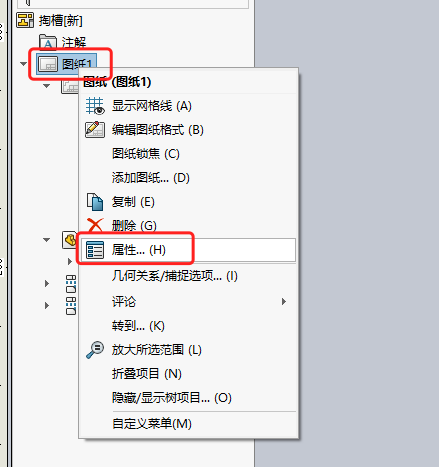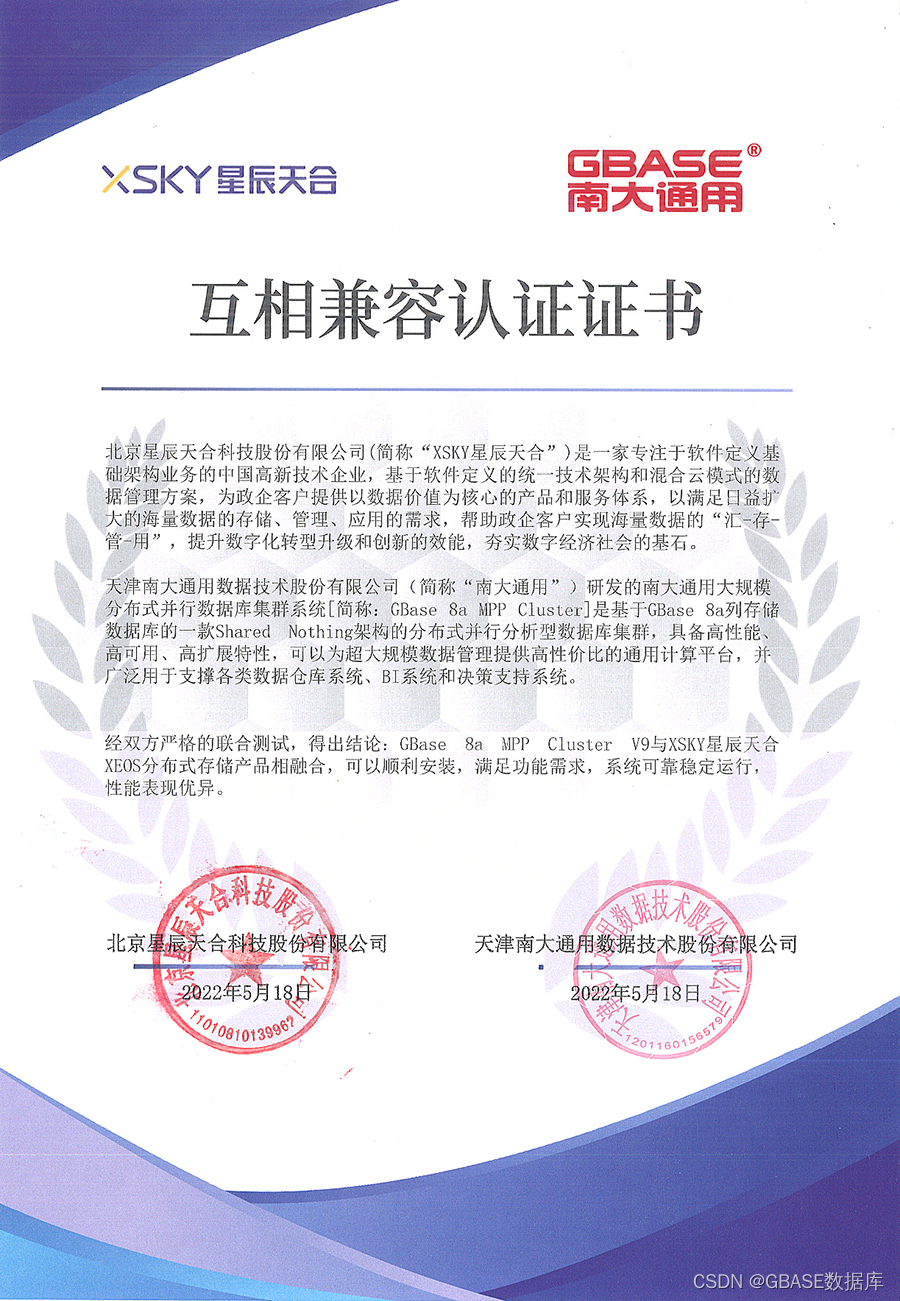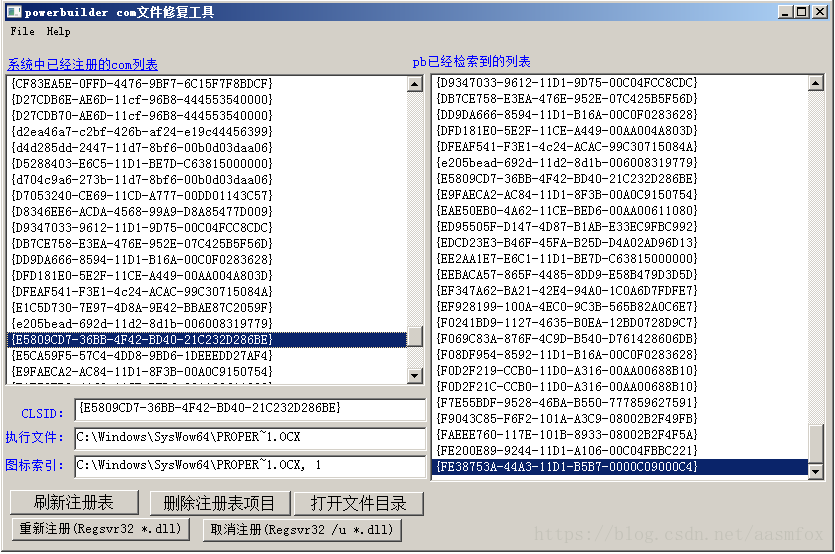当前位置:网站首页>Ml self realization / linear regression / multivariable
Ml self realization / linear regression / multivariable
2022-07-08 01:58:00 【xcrj】
principle
Prediction function :
h θ ( x ) = θ 0 + θ 1 x 1 + θ 2 x 2 + θ 3 x 3 h_\theta(x)=\theta_0+\theta_1x_1+\theta_2x_2+\theta_3x_3 hθ(x)=θ0+θ1x1+θ2x2+θ3x3
Parameters :
θ 0 , θ 1 , θ 2 , θ 3 \theta_0, \theta_1, \theta_2, \theta_3 θ0,θ1,θ2,θ3
cost function : Least square method
J ( θ 0 , θ 1 , θ 2 , θ 3 ) = 1 m ∑ i = 1 m ( h θ ( x ( i ) ) − y ( i ) ) 2 J(\theta_0,\theta_1,\theta_2,\theta_3)=\frac{1}{m}\sum\limits_{i=1}^m(h_\theta(x^{(i)})-y^{(i)})^2 J(θ0,θ1,θ2,θ3)=m1i=1∑m(hθ(x(i))−y(i))2
The goal is :
m i n i m i z e θ 0 , θ 1 , θ 2 , θ 3 J ( θ 0 , θ 1 , θ 2 , θ 3 ) \mathop{minimize}\limits_{\theta_0,\theta_1,\theta_2,\theta_3}J(\theta_0,\theta_1,\theta_2,\theta_3) θ0,θ1,θ2,θ3minimizeJ(θ0,θ1,θ2,θ3)
Batch gradient descent algorithm :
- Repeat until it converges {
θ j : = θ j − α ∂ J ( θ 0 , θ 1 , θ 2 , θ 3 ) ∂ θ j \theta_j:=\theta_j-\alpha\frac{\partial{J(\theta_0,\theta_1,\theta_2,\theta_3)}}{\partial{\theta_j}} θj:=θj−α∂θj∂J(θ0,θ1,θ2,θ3)
} - Repeat until it converges {
θ 0 : = θ 0 − α 2 m ∑ i = 1 m ( h θ ( x ( i ) ) − y ( i ) ) \theta_0:=\theta_0-\alpha\frac{2}{m}\sum\limits_{i=1}^m(h_\theta(x^{(i)})-y^{(i)}) θ0:=θ0−αm2i=1∑m(hθ(x(i))−y(i))
θ 1 : = θ 1 − α 2 m ∑ i = 1 m ( h θ ( x ( i ) ) − y ( i ) ) ⋅ x ( i ) \theta_1:=\theta_1-\alpha\frac{2}{m}\sum\limits_{i=1}^m(h_\theta(x^{(i)})-y^{(i)})\cdot{x^{(i)}} θ1:=θ1−αm2i=1∑m(hθ(x(i))−y(i))⋅x(i)
θ 2 : = θ 2 − α 2 m ∑ i = 1 m ( h θ ( x ( i ) ) − y ( i ) ) ⋅ x ( i ) \theta_2:=\theta_2-\alpha\frac{2}{m}\sum\limits_{i=1}^m(h_\theta(x^{(i)})-y^{(i)})\cdot{x^{(i)}} θ2:=θ2−αm2i=1∑m(hθ(x(i))−y(i))⋅x(i)
θ 3 : = θ 3 − α 2 m ∑ i = 1 m ( h θ ( x ( i ) ) − y ( i ) ) ⋅ x ( i ) \theta_3:=\theta_3-\alpha\frac{2}{m}\sum\limits_{i=1}^m(h_\theta(x^{(i)})-y^{(i)})\cdot{x^{(i)}} θ3:=θ3−αm2i=1∑m(hθ(x(i))−y(i))⋅x(i)
} - Be careful : Batch gradient descent algorithm needs to be updated at the same time θ 0 , θ 1 , θ 2 , θ 3 \theta_0,\theta_1,\theta_2,\theta_3 θ0,θ1,θ2,θ3
Normal equation method :
- X θ = y ⇒ X − 1 y = θ ⇒ ( X T X ) − 1 X T y = θ X\theta=y\Rightarrow X^{-1}y=\theta\Rightarrow(X^TX)^{-1}X^Ty=\theta Xθ=y⇒X−1y=θ⇒(XTX)−1XTy=θ
Experience
Gradient descent learning rate α \alpha α choice
- α \alpha α Too small , Convergence to the optimal speed is slow
- α \alpha α Too big , May miss the best , It won't converge
- α = . . . , 0.001 , 0.003 , 0.01 , 0.03 , 0.1 , 0.3 , 1 , . . . \alpha=..., 0.001, 0.003, 0.01, 0.03, 0.1, 0.3, 1, ... α=...,0.001,0.003,0.01,0.03,0.1,0.3,1,...
- Try α \alpha α, find max α \alpha α,min α \alpha α, They all make cost Step down , stay min and max α \alpha α Fine tuning in
Normal equation method - X − 1 X^{-1} X−1 There is no problem
- Remove similar features
- The number of features > Characteristic dimension , Features must be linearly correlated , Some features can be deleted
Gradient descent and normal equation method selection
| contrast | Gradient descent algorithm | Normal equation algorithm |
|---|---|---|
| Learning rate | need | Unwanted |
| The number of iterations | n Time | 1 Time |
| Characteristic quantity | >0 | <1000000, Because the time complexity of matrix calculation is O ( n 3 ) O(n^3) O(n3) |
| adaptive | Various models | linear regression model |
Data sets
- features : Number of cylinders (cylinders), displacement (displacement), horsepower (horsepower), weight (weights), The acceleration (acceleration) wait
- The goal is :mpg(mile per gallon)-1 Miles per gallon
- This paper is multivariable linear regression , The discussion is characterized by acceleration, displacement, horsepower; The goal is MPG The situation of
Code
import pandas as pd
import seaborn as sns
import numpy as np
import matplotlib
import matplotlib.pyplot as plt
matplotlib.rcParams['font.family'] = 'STSong'
matplotlib.rcParams['font.size'] = 20
class DataSet(object):
""" X_train Training set samples y_train Training set sample value X_test Test set samples y_test Test set sample values """
def __init__(self, X_train, y_train, X_test, y_test):
self.X_train = X_train
self.y_train = y_train
self.X_test = X_test
self.y_test = y_test
def read_data():
""" Reading data """
column_names = ['MPG', 'cylinders', 'displacement', 'horsepower', 'weight', 'acceleration', 'model year', 'origin']
# names: Header
# sep: Separator
# skipinitialspace: Ignore the space after the delimiter
# comment: Ignore \t Note after
# na_values: Use ? Replace NA Value
origin_data = pd.read_csv("./data/auto-mpg.data", names=column_names, sep=" ", skipinitialspace=True, comment="\t",
na_values="?")
# Copy
data = origin_data.copy()
# tail() Print last n Row data
print(data.tail())
return data
def clean_data(data):
""" Data cleaning : Handling outliers """
# dataset Does it contain NA data
# pandas 0.22.0+ Only then isna(), Upgrade order :pip install --upgrade pandas==0.22.0
print('NA Row number :', data.isna().sum())
# Delete the exception line
cleaned_data = data.dropna()
return cleaned_data
def split_data(data):
""" Divide the data Divided into train, test;train Used to train the prediction function ,test Used to test the predicted function value and y_test Distance of This code does multivariable linear regression : X= Number of cylinders (cylinders), displacement (displacement), horsepower (horsepower), weight (weights), The acceleration (acceleration) 'cylinders', 'displacement', 'horsepower', 'weight', 'acceleration', 'model year', 'origin' y=MPG(mile per gallon-1 Gallons can run miles ) """
copied_data = data.copy()
# frac: The proportion of rows extracted ;random_state Random seeds
train_dataset = copied_data.sample(frac=0.8, random_state=1)
# Take the rest of the test set
test_dataset = copied_data.drop(train_dataset.index)
column_list = ['cylinders', 'displacement', 'horsepower']
X_train = train_dataset[column_list]
y_train = train_dataset[['MPG']]
X_test = test_dataset[column_list]
y_test = test_dataset[['MPG']]
dataset = DataSet(X_train, y_train, X_test, y_test)
return dataset
def check_dataset(dataset):
""" Check the dataset Check the distribution Check the overall situation """
# The relationship between the two characteristics
sns.pairplot(dataset.X_train, diag_kind="kde")
sns.pairplot(dataset.y_train, diag_kind="kde")
sns.pairplot(dataset.X_test, diag_kind="kde")
sns.pairplot(dataset.y_test, diag_kind="kde")
plt.show()
print(dataset.X_train.describe().transpose())
print(dataset.y_train.describe().transpose())
print(dataset.X_test.describe().transpose())
print(dataset.y_test.describe().transpose())
def mean_normalize(dataset):
""" Normalization of eigenvalue mean Make the contour map composed of different features more round , The gradient descent speed from any direction is almost the same Eigenvalues affect the rate of gradient descent ( Slender contour map ) """
# mean value
# axis=0, Find the average value of each column , Output as a line
mu = np.mean(dataset.X_train, axis=0)
# Standard deviation
sigma = np.std(dataset.X_train, axis=0)
X_train_norm = (dataset.X_train - mu) / sigma
mu = np.mean(dataset.X_test, axis=0)
# Standard deviation
sigma = np.std(dataset.X_test, axis=0)
X_test_norm = (dataset.X_test - mu) / sigma
dataset_norm = DataSet(X_train_norm, dataset.y_train, X_test_norm, dataset.y_test)
return dataset_norm
class LinearRegression(object):
""" Multivariate linear regression Gradient descent algorithm """
def __init__(self):
""" This experiment takes 3 Features """
# theta0 yes bias
self.theta0 = 0
# theta
self.theta = np.array([[0, 0, 0]]).T
def gradient_descent(self, X, y, alpha=0.001, num_iter=100):
""" Gradient descent algorithm , Least square method :param X: X_train, Multivariate linear regression x_1,x_2,x_3 :param y: y_train :param alpha: Learning rate , Adjust the step size of a gradient descent :param num_iter: The number of iterations """
# m Is the number of samples
m, _ = X.shape
costs = []
for i in range(num_iter):
# Predictive value
h = self.theta0 + np.dot(X, self.theta)
# Costing
cost = (1 / m) * np.sum((h - y) ** 2)
costs.append(cost)
# Gradient calculation
dJ_dtheta0 = (2 / m) * np.sum(h - y)
dJ_dtheta = (2 / m) * np.dot((h - y).T, X).T
# Simultaneous updating theta1 and theta0
self.theta0 = self.theta0 - alpha * dJ_dtheta0
self.theta = self.theta - alpha * dJ_dtheta
return costs
def normal_equation(self, X, y):
""" Normal equation method """
self.theta_ne = np.dot(np.dot(np.linalg.inv(np.dot(X.T, X)), X.T), y)
self.theta_ne0 = 0
def show_train(self, costs, num_iter):
""" Show the training process """
fig = plt.figure(figsize=(10, 6))
plt.plot(np.arange(num_iter), costs)
plt.title(" Cost changes ")
plt.xlabel(" The number of iterations ")
plt.ylabel(" cost ")
plt.show()
def hypothesis(self, X, theta0, theta):
""" Prediction function """
return theta0 + np.dot(X, theta)
def evaluate_model(y_test, h):
""" Evaluation model """
# MSE: Mean square error
print("MSE: %f" % (np.sum((h - y_test) ** 2) / len(y_test)))
# RMSE: Root mean square difference
print("RMSE: %f" % (np.sqrt(np.sum((h - y_test) ** 2) / len(y_test))))
def main():
# Reading data
data = read_data()
# Data cleaning
cleaned_data = clean_data(data)
# Split data
dataset = split_data(cleaned_data)
# Check the dataset
# check_dataset(dataset)
# Mean normalization , Eigenvalues affect the rate of gradient descent ( Slender contour map )
dataset_norm = mean_normalize(dataset)
print('#### Gradient descent algorithm ####')
# Build the model
linear_regression = LinearRegression()
num_iteration = 100
# dataframe.values Method pandas/DataFrame turn numpy/ndarray
costs = linear_regression.gradient_descent(dataset_norm.X_train.values, dataset_norm.y_train.values, alpha=0.03,
num_iter=num_iteration)
# Show the training process
linear_regression.show_train(costs, num_iteration)
# Evaluation model , Evaluate the prediction function
h = linear_regression.hypothesis(dataset_norm.X_test.values, linear_regression.theta0, linear_regression.theta)
evaluate_model(dataset_norm.y_test.values, h)
print('#### Normal equation algorithm ####')
linear_regression.normal_equation(dataset_norm.X_train.values, dataset_norm.y_train.values)
h = linear_regression.hypothesis(dataset_norm.X_test.values, linear_regression.theta_ne0,
linear_regression.theta_ne)
evaluate_model(dataset_norm.y_test.values, h)
if __name__ == '__main__':
main()
边栏推荐
- 什么样的MES系统才是好系统
- Urban land use distribution data / urban functional zoning distribution data / urban POI points of interest / vegetation type distribution
- Codeforces Round #643 (Div. 2)——B. Young Explorers
- MySQL数据库(2)
- 很多小夥伴不太了解ORM框架的底層原理,這不,冰河帶你10分鐘手擼一個極簡版ORM框架(趕快收藏吧)
- 微软 AD 超基础入门
- What are the types of system tests? Let me introduce them to you
- Wechat applet uniapp page cannot jump: "navigateto:fail can not navigateto a tabbar page“
- 静态路由配置全面详解,静态路由快速入门指南
- C language -cmake cmakelists Txt tutorial
猜你喜欢

Remote sensing contribution experience sharing
![[target tracking] |dimp: learning discriminative model prediction for tracking](/img/72/d151fe0eb0a92e8c6931e6c50dad0f.png)
[target tracking] |dimp: learning discriminative model prediction for tracking

Version 2.0 of tapdata, the open source live data platform, has been released

Remote Sensing投稿經驗分享

Apache multiple component vulnerability disclosure (cve-2022-32533/cve-2022-33980/cve-2021-37839)

【SolidWorks】修改工程图格式

生态 | 湖仓一体的优选:GBase 8a MPP + XEOS

Give some suggestions to friends who are just getting started or preparing to change careers as network engineers

PB9.0 insert OLE control error repair tool

C language -cmake cmakelists Txt tutorial
随机推荐
Redisson分布式锁解锁异常
Optimization of ecological | Lake Warehouse Integration: gbase 8A MPP + xeos
DataWorks值班表
软件测试笔试题你会吗?
MySQL查询为什么没走索引?这篇文章带你全面解析
给刚入门或者准备转行网络工程师的朋友一些建议
How to make the conductive slip ring signal better
Apache多个组件漏洞公开(CVE-2022-32533/CVE-2022-33980/CVE-2021-37839)
Graphic network: uncover the principle behind TCP's four waves, combined with the example of boyfriend and girlfriend breaking up, which is easy to understand
云原生应用开发之 gRPC 入门
pb9.0 insert ole control 错误的修复工具
Codeforces Round #649 (Div. 2)——A. XXXXX
C language -cmake cmakelists Txt tutorial
Redux使用
From starfish OS' continued deflationary consumption of SFO, the value of SFO in the long run
Applet running under the framework of fluent 3.0
城市土地利用分布数据/城市功能区划分布数据/城市poi感兴趣点/植被类型分布
Kwai applet guaranteed payment PHP source code packaging
PHP calculates personal income tax
See how names are added to namespace STD from cmath file